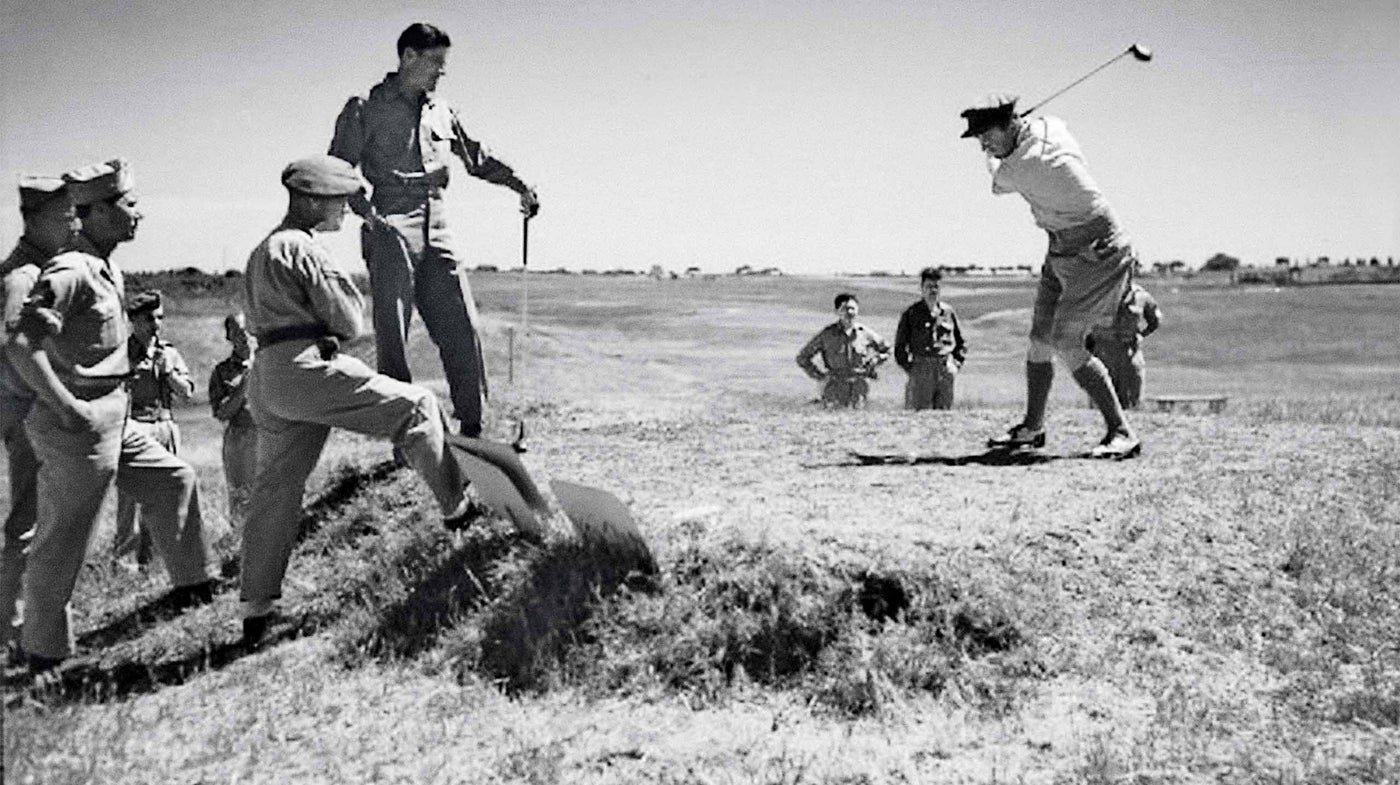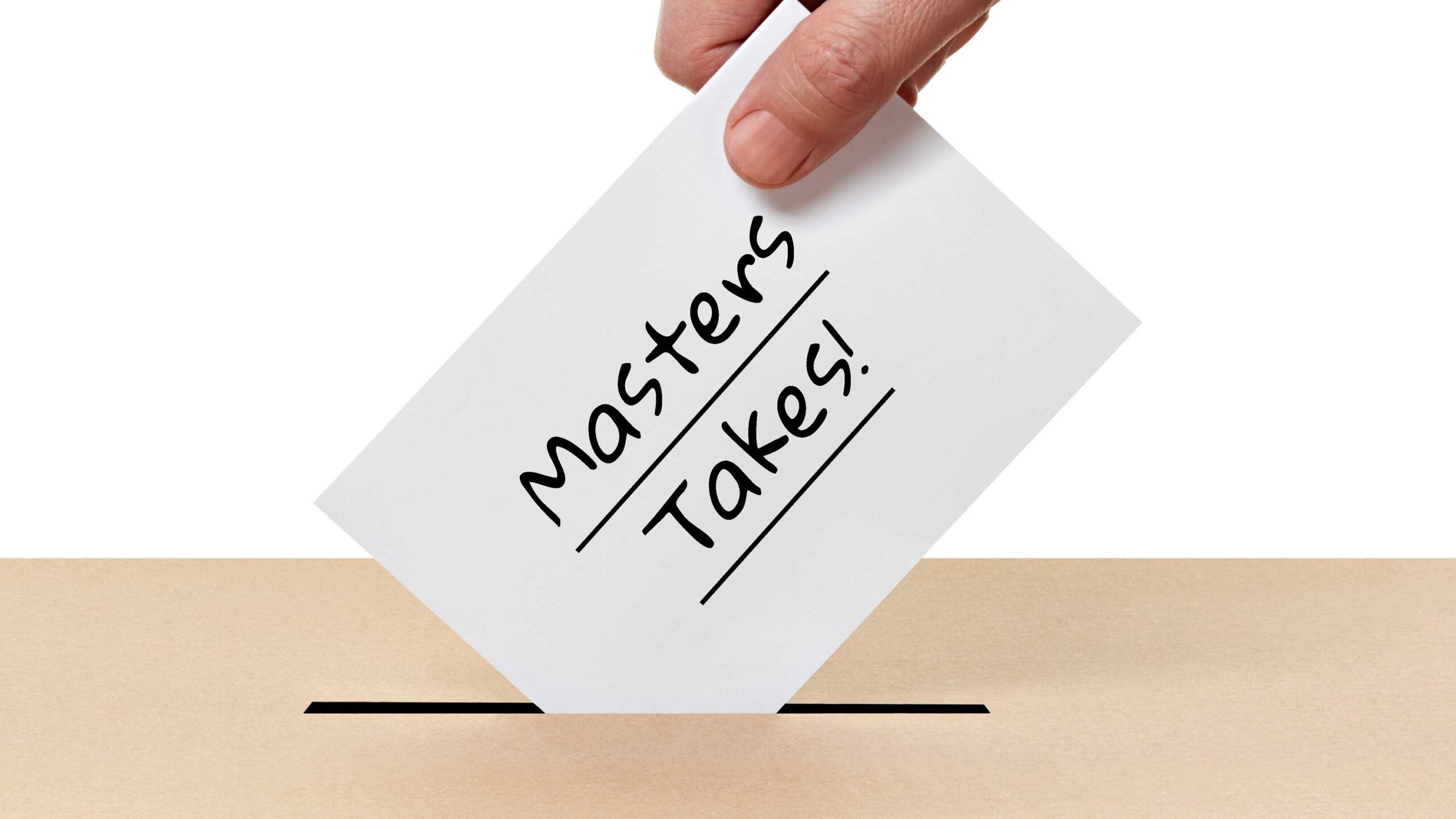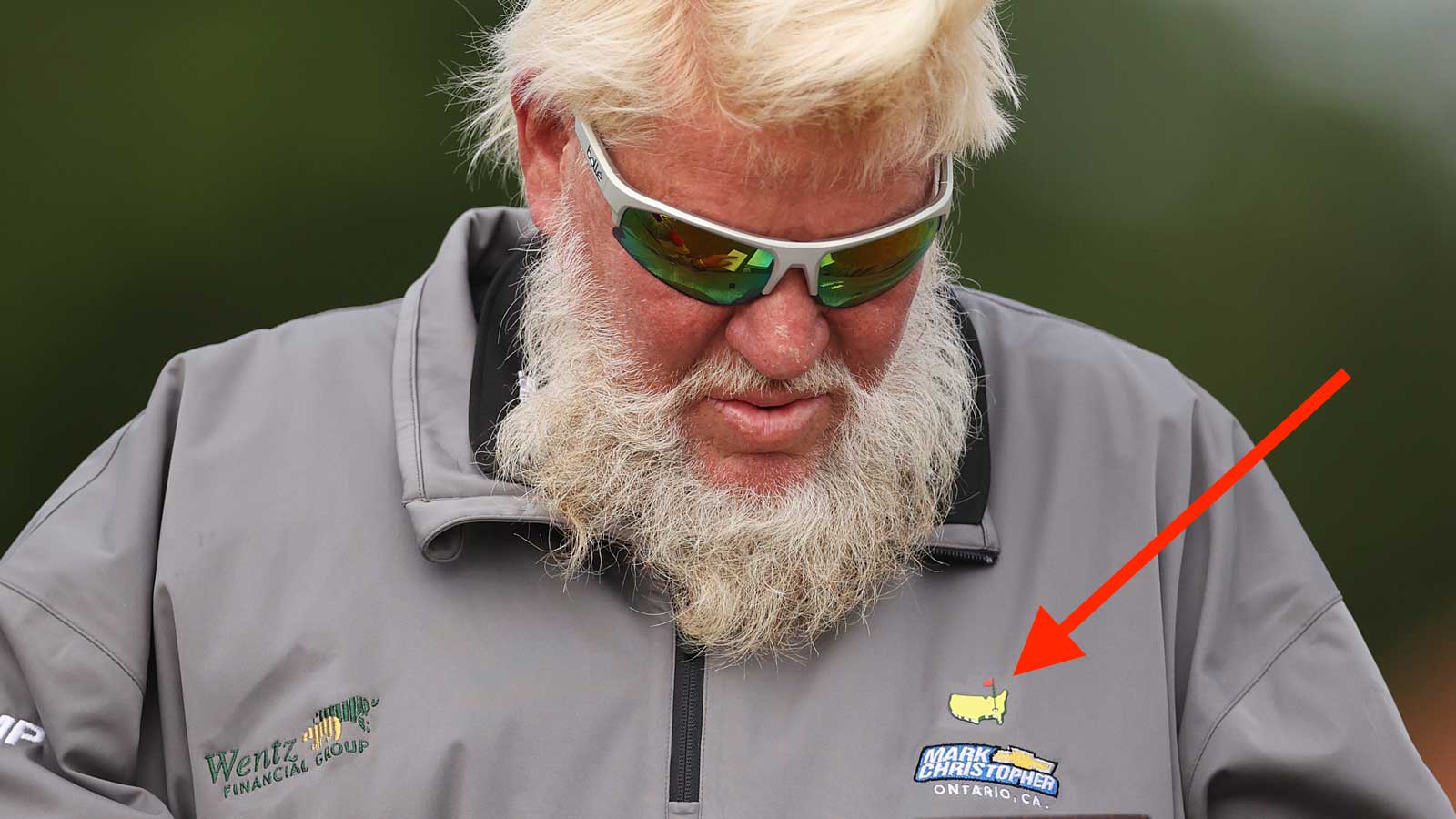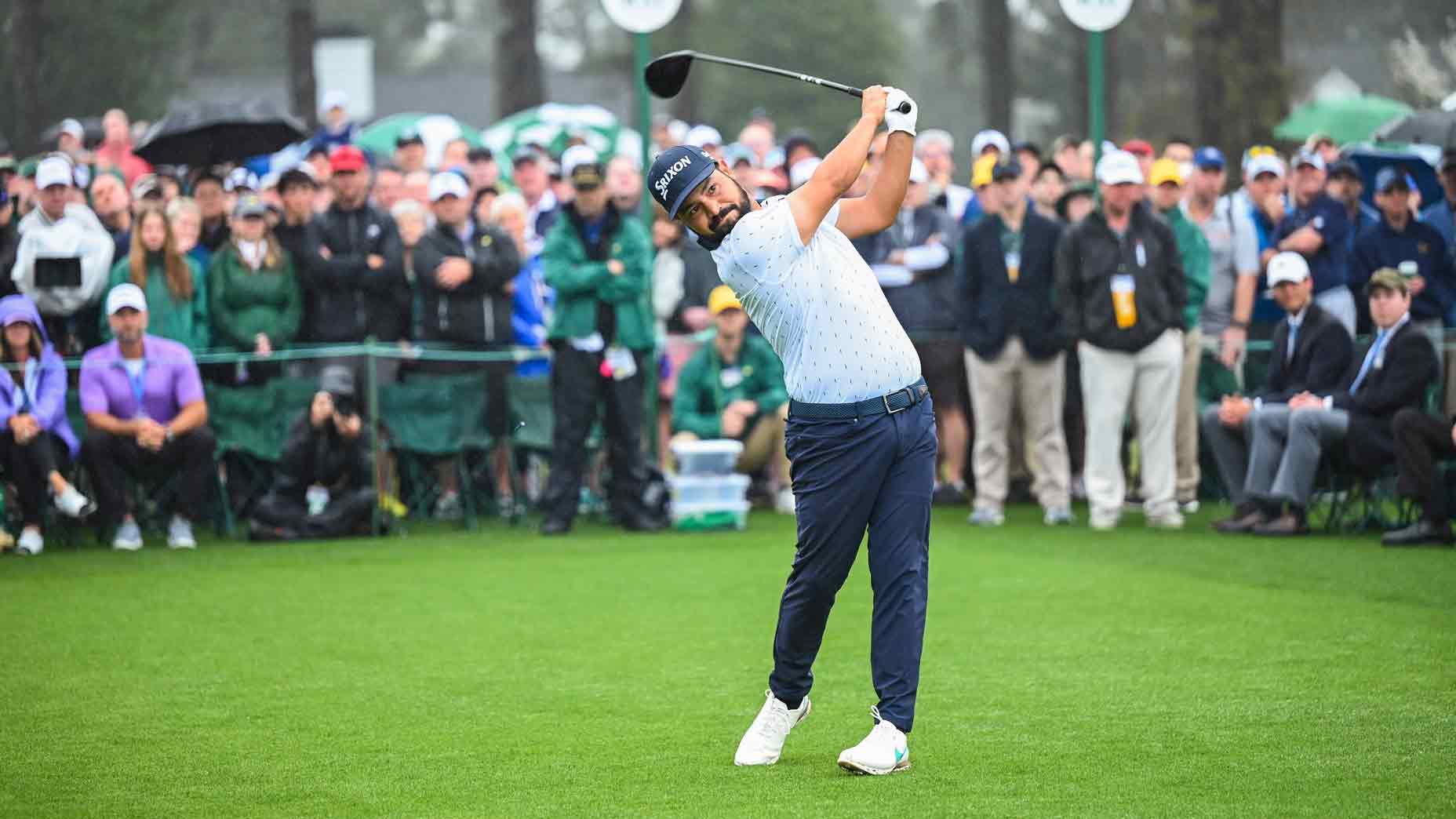As professional golf ground to a halt in mid-March due to the coronavirus and many if not most courses in the U.S. were shuttered for recreational play, a nation turned its lonely eyes to the past, trying to predict an uncertain future.
The last time golf was shut down on such a scale was during World War II. Now we are clashing with an “invisible enemy,” to use the favored parlance of certain politicians. Golf was one of the many early casualties, with the PGA Tour put on hold and a needed form of recreation widely unavailable. By Memorial Day, the game had morphed into an acceptable form of outdoor therapy. Every state had reopened golf courses (with new social-distancing protocols), offering blessed sunshine, exercise, competition and camaraderie for those who had been holed up at home. A pair of made-for-TV exhibition matches gave fans some desperately needed live sports, with the promise of more action on the way soon.
Still, those two months without the game felt like an eternity and it was hard not to wonder how on earth did golf, and golfers, survive the long, dark years of World War II? Looking back at that unique epoch tells us much about golf ’s role in the American experiment. It also offers some valuable context as the game grapples with its place in the new reality of life with the coronavirus. Most of all, the World War II era proves that golf and golfers will always find a way, whether it’s American POWs building their own course or the likes of Bobby Jones and Lloyd Mangrum moving seamlessly from the course to the battlefield.
* * * * *
Golf has been woven into the collective memory of World War II since the very first moments when the U.S. was attacked at Pearl Harbor. The commander in chief of the Navy’s Pacific Fleet, the memorably named Husband E. Kimmel, was an ardent golfer, and he was getting dressed for his regular Sunday-morning game at the Fort Shafter golf course when the first bombs began raining down upon Pearl Harbor. Kimmel’s flat-footed response would become part of the lore of the Day of Infamy, and the 2001 film Pearl Harbor took the liberty of placing the admiral on the golf course — in swanky saddle shoes and a plaid vest, no less — as the attack unfolds. It was the ultimate indictment.
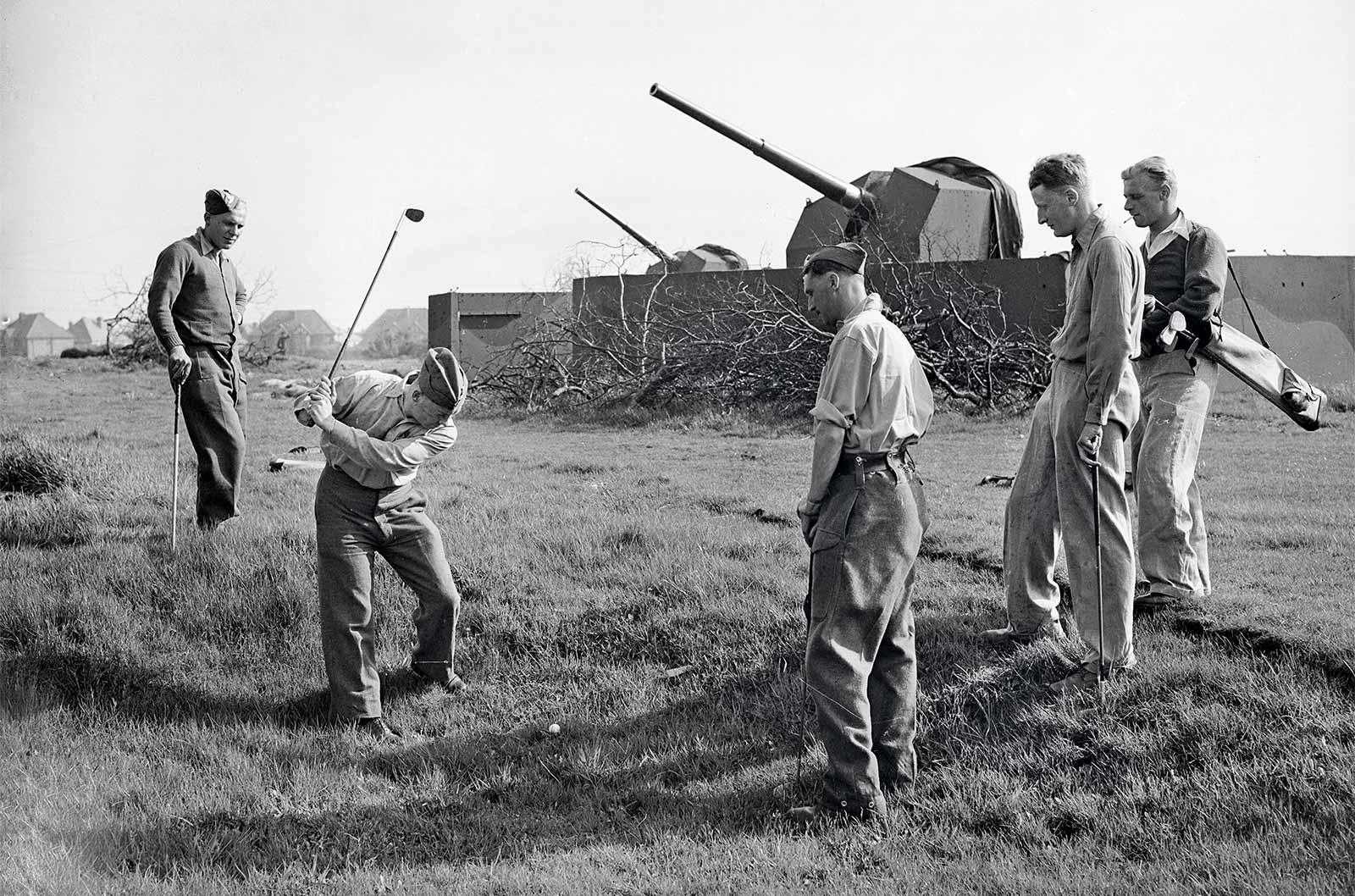
As the U.S. immediately plunged into war, golf ’s stewards carefully framed the sport as a kind of patriotism. Shaping policy was John Kelly, the assistant director of civilian defense in charge of physical fitness and, felicitously, a member of Bala Golf Club in Philadelphia, known for his breakneck pace of play. In a letter to the USGA days after Pearl Harbor, Kelly wrote, “Eight million people will be going into the armed forces. My job is to look after the 124 million who won’t or can’t go. They can keep fit by playing golf. France was the most physically inactive country in the world and look what happened to them.”
The Office of Civilian Defense was a branch of the federal government. Kelly created a new position — golf deputy — and named to the post Fred Corcoran, the manager of the PGA Tournament Bureau (the precursor to the modern PGA Tour) and a natural-born salesman. Together they proposed a series of fundraisers to be called the Hale America tournaments. Seventeen days after Pearl Harbor, on December 24, 1941, Kelly sent a letter to state and national golf associations and newspapermen who covered the game. It read, in part, “This is the time when golf really must score for the physical and mental conditioning of American citizens under wartime pressure. Golf’s strong attraction as a sport in which more than 2 1/4 million of our citizens exercise regularly in the open air qualifies the game for national service of a vital character. Therefore we are urging the golf clubs and organizations of America to exert themselves to meet the requirements of individual and collective physical fitness.”
As John Strege writes in his excellent history of the era, When War Played Through (2005), “There it was, a direct order to play on, and to do so with a newfound sense of purpose, no doubt to the chagrin of the nation’s golf widows. Their husbands had become empowered to argue honestly that their Saturday golf games were government sanctioned. It may have been the most important endorsement the game ever received, a government seal of approval, framed in red, white and blue.”
Seven decades later, Kelly’s letter was cited in some quarters as the debate raged as to whether or not golf courses should stay open amidst shelter-in-place orders. And the past is always prologue: Just as modern Americans hoarded toilet paper in the face of Covid-19, duffers at the dawn of World War II made a run on golf balls, knowing they were sure to become scarce. On December 17, 1941, the federal Office of Price Administrations announced a rationing plan for civilian use of rubber products. The next morning, the Abercrombie & Fitch store in New York City was cleaned out of 24,000 balls — its entire inventory — and across the nation golfers similarly stocked up on the most precious of commodities. Factory-refurbished used balls became such a thing that Gene Sarazen used one in the second round of the 1942 Masters.
As America plunged into war, professional golfers were eager to do their part, beginning with the living legend Bobby Jones. He came out of retirement to compete in the 1942 Hale America Open, a fundraiser for war relief. The day after the tournament ended, this married father of three reported for active duty in the Army Air Corps as a captain helping to oversee the Aircraft Warning Service, which employed thousands of volunteers monitoring the Eastern seaboard for enemy planes. Jones pressed to be on the front lines, and against the misgivings of superior officers he was assigned to the Army Air Corps Intelligence school in Harrisburg, Pa., where he received training in prisoner interrogation, which made sense for a man holding a law degree. Maj. Jones arrived in London in January 1944, assigned to the 84th Fighter Wing of the Ninth Tactical Air Command. His unit was converted to infantry, and the day after D-Day they were sent into the fray to secure an airfield 20 miles inland. Strege writes in his book that Jones “found himself engaged in combat, under intense enemy fire for two days.” Jones’s wish had come true. Two months later he was sent home, by way of Warton Air Base, which was close to Royal Lytham & St. Annes, where he had won the 1926 Open Championship. When Emperor Jones swung by for a visit, the members insisted he walk them out to a sand hill left of the 17th fairway so they could install a plaque on the exact spot where he had hit the famous mashie that helped secure his victory.
Lloyd Mangrum’s service had a more bittersweet ending. In 1942, the young Texan won three times during the PGA’s aborted season, earning the nickname “The Icicle” for his cool demeanor. When Mangrum enlisted in the Army, he was offered the cushy position of head pro of the course at Fort Meade, but he, too, was spoiling for combat. “I’m in the Army to fight for my country, not to play golf,” Mangrum growled. He wound up in the second wave that stormed Omaha Beach on D-Day. As the earth shook from the fighting, Mangrum’s jeep overturned and he sustained a broken arm. When he healed, Mangrum was shipped to Frankfurt to help chase the retreating German army. During a firefight at the Battle of the Bulge, Mangrum was shot in the shoulder and leg. He would ultimately be awarded two Purple Hearts, two Bronze Stars and two Silver Stars. Medals and trophies of a different sort would have to wait.
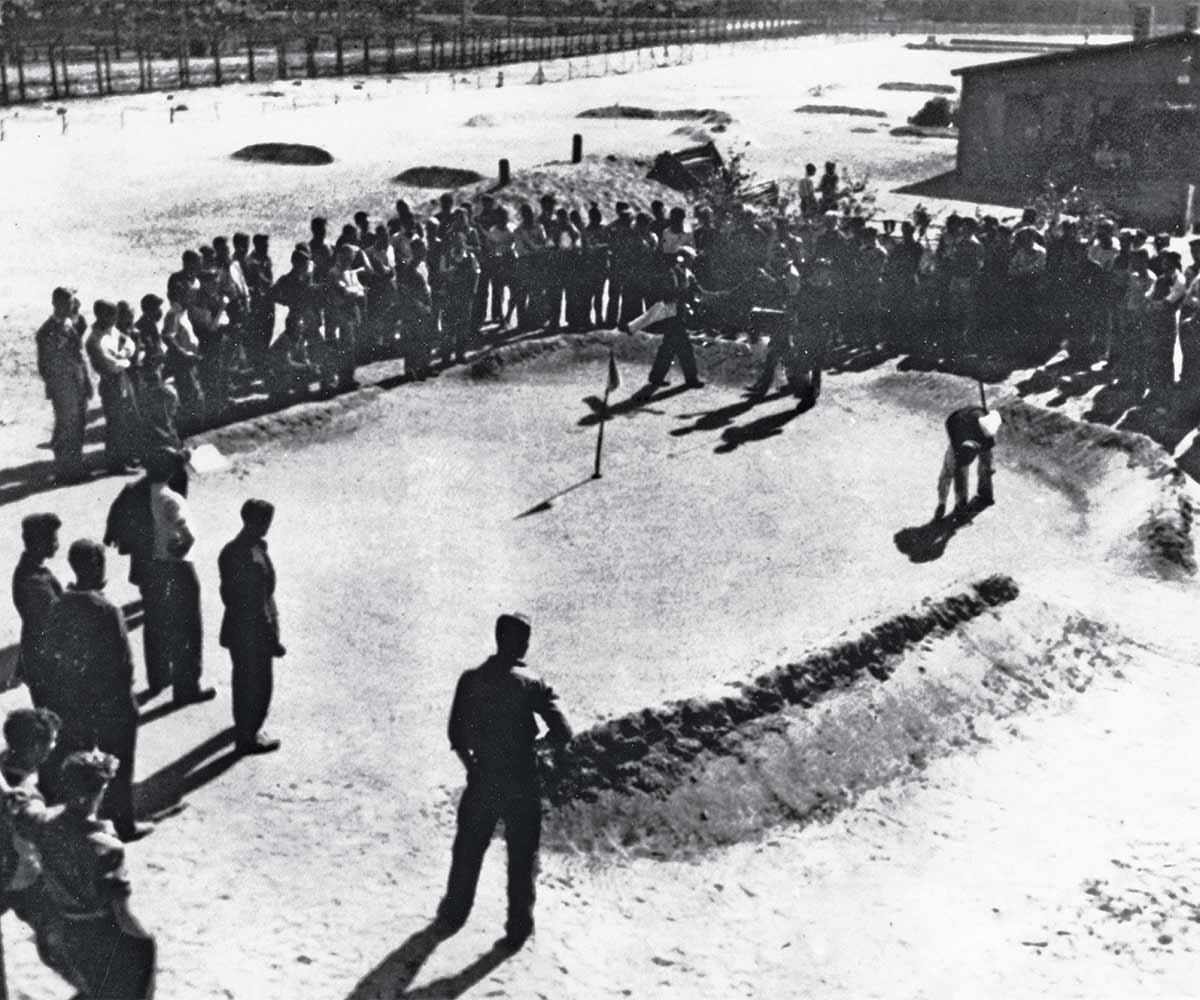
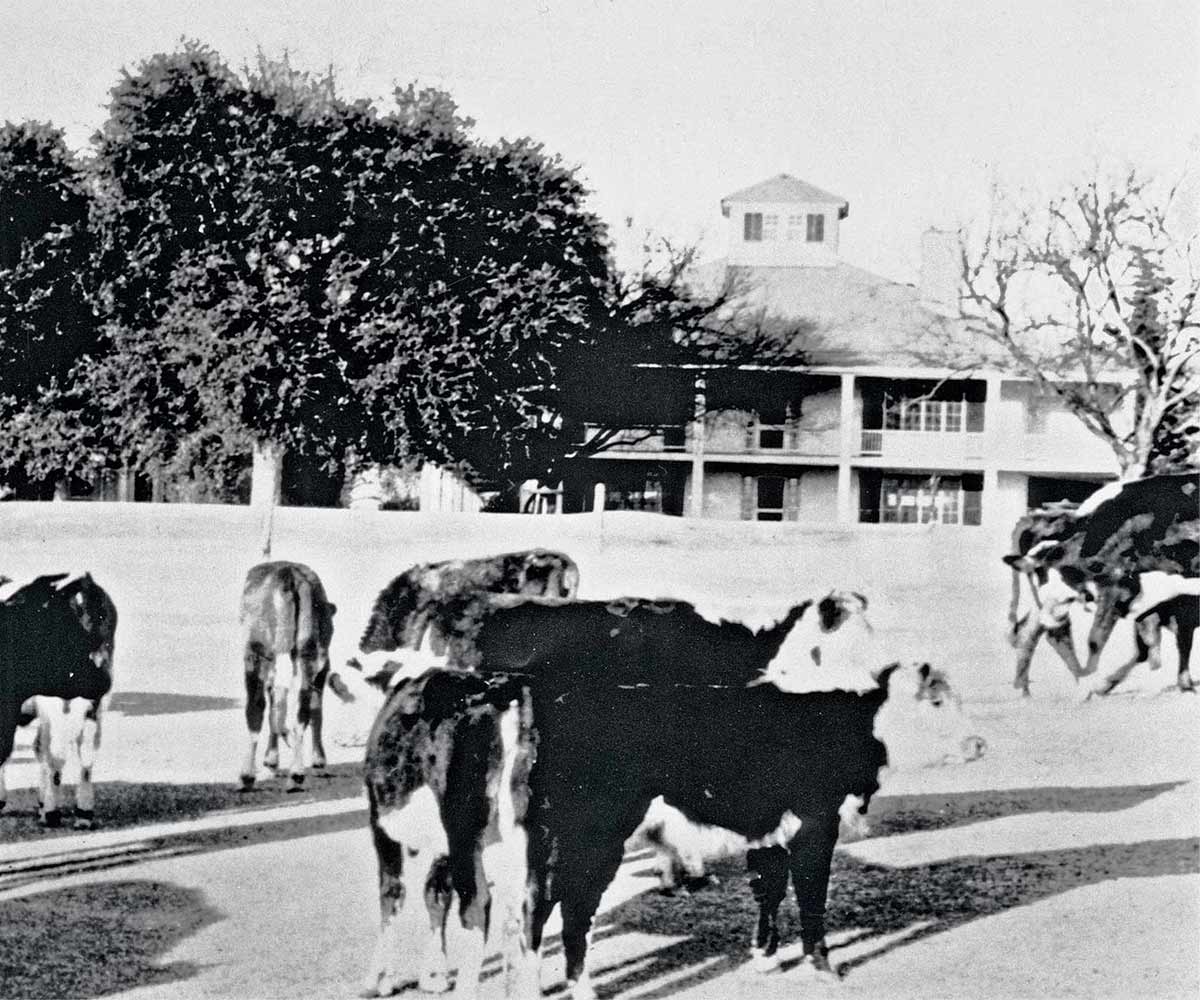
* * * * *
Throughout the war, golf was played in the most unexpected places, as Strege details in his book. Sgt. Dugan Aycock, a one-time club pro from North Carolina, sneaked golf gear into Northern Africa among the kitchen utensils, in his role as a special services director for his Army unit. Redirected to Italy, Aycock put together in March 1945 the Rome Open, recruiting golfers from among American, British and South African soldiers and Italian pros. Pvt. Tommy Bolt, still an amateur and member of the Army Corps of Engineers, was one of the competitors. (Bolt would go on to win the 1958 U.S. Open.)
An electrician in the Navy created his own five-hole course on an atoll on Tarawa, a chain of coral islets between Hawaii and Papua New Guinea. He fashioned a club out of a radio antenna and the wreckage of a landing craft and somehow scrounged a handful of actual golf balls. Elsewhere in the South Pacific, the Navy Seabee construction crew built a nine-hole course that was christened the Yankee Bee Country Club. The sailors built their own golf clubs using pickax handles for shafts and melting scrap metal into clubheads. A lone goat was used for course maintenance. Eventually, 45 men ponied up 50 cents apiece for a club championship, which drew the attention of a Marine Corps correspondent, who wrote in a dispatch, “Stateside tournaments find the gallery heading for the clubhouse at the outbreak of a rainstorm. Here, an occasional bombing from the [Japanese] adds to the many hazards, sending player and spectators scampering into the many foxholes nestled about the course.” This echoed the temporary local rules at Richmond Golf Course in London, which included, “A player whose stroke is affected by the simultaneous explosion of a bomb may play another ball. Penalty one stroke.” Those last three words tell you everything you need to know about the game, and it puts into perspective the inconvenience of having to wear a face mask in the pro shop during our current moment.
Golfers will clearly play anywhere, any way, but the most extreme example occurred 100 miles southeast of Berlin, in the village of Sagan. There the Germans maintained Stalag Luft III, a POW camp for British and American officers. The prisoners were allowed to play golf, and they took it to the illogical extreme, building a nine-hole course of roughly 850 yards with sand greens and discarded metal cans serving as recessed holes. They made their own balls, wrapping a solid wooden core with thin slices of rubber taken from gym shoes they received in clothing parcels from home. Club shafts were made from strips of wood and clubheads forged from the foil of cigarette packs, which were melted using rendered margarine as fuel. (Clearly, prisoners of war have plenty of time to be creative.) The guards supplied two white coats that the POWs would don to retrieve balls misplayed into “forbidden zones”; the jackets were a signal to the sharpshooters in the guard towers that these wayward golfers were not trying to escape.

Eventually a club championship was organized and a Royal Air Force POW named Patrick Ward-Thomas wrote up a lively account that he mailed to the Royal and Ancient Golf Club of St. Andrews. The R&A responded by sending some real clubs and balls to the prisoners, and Bernard Darwin typed up an account of golf at Stalag Luft for Country Life magazine. Of course, the prisoners at Stalag Luft III came to be known for a different kind of ingenuity, as they dug a 336-foot tunnel under the camp, and, in March 1944, 76 of them sneaked away in what would be celebrated as “the Great Escape.” Alas, all but three were captured and 50 of them executed under orders of the führer. The rest of the POWs played on, with golf their only means of escaping the harsh realities of the camp.
Of course, it took a golfer to end the war. While planning the invasion of North Africa and then Operation Overlord, Maj. Gen. Dwight D. Eisenhower was stationed in London. His weekend retreat abutted the 13th hole at Coombe Hill Golf Club, which counted Winston Churchill among its members and King Edward VIII as a regular. Ike rarely had time for a full 18, so he devised his own whiskey route, playing holes 14-15-11-12-13, giving himself an hour or so to clear his head. On May 8, 1945, the U.S. and Great Britain declared V-E (Victory in Europe) Day. The war was over, and that afternoon Ike walked out of his cottage straight onto Coombe Hill to enjoy a little taste of victory. One of the major general’s lasting rewards was a lifetime honorary membership to the R&A.
* * * * *
Dwight Eisenhower would later be invited to become a member at Augusta National Golf Club, which, because of the war, was shuttered shortly after the 1942 Masters but reopened in December 1944 with the help of 42 German POWs being held at nearby Camp Gordon. The Germans, who ANGC brought in as laborers, were an engineering crew that had served under Rommel in North Africa, building bridges for tanks, so constructing a footbridge over Rae’s Creek near the 13th tee box was a piece of cake.
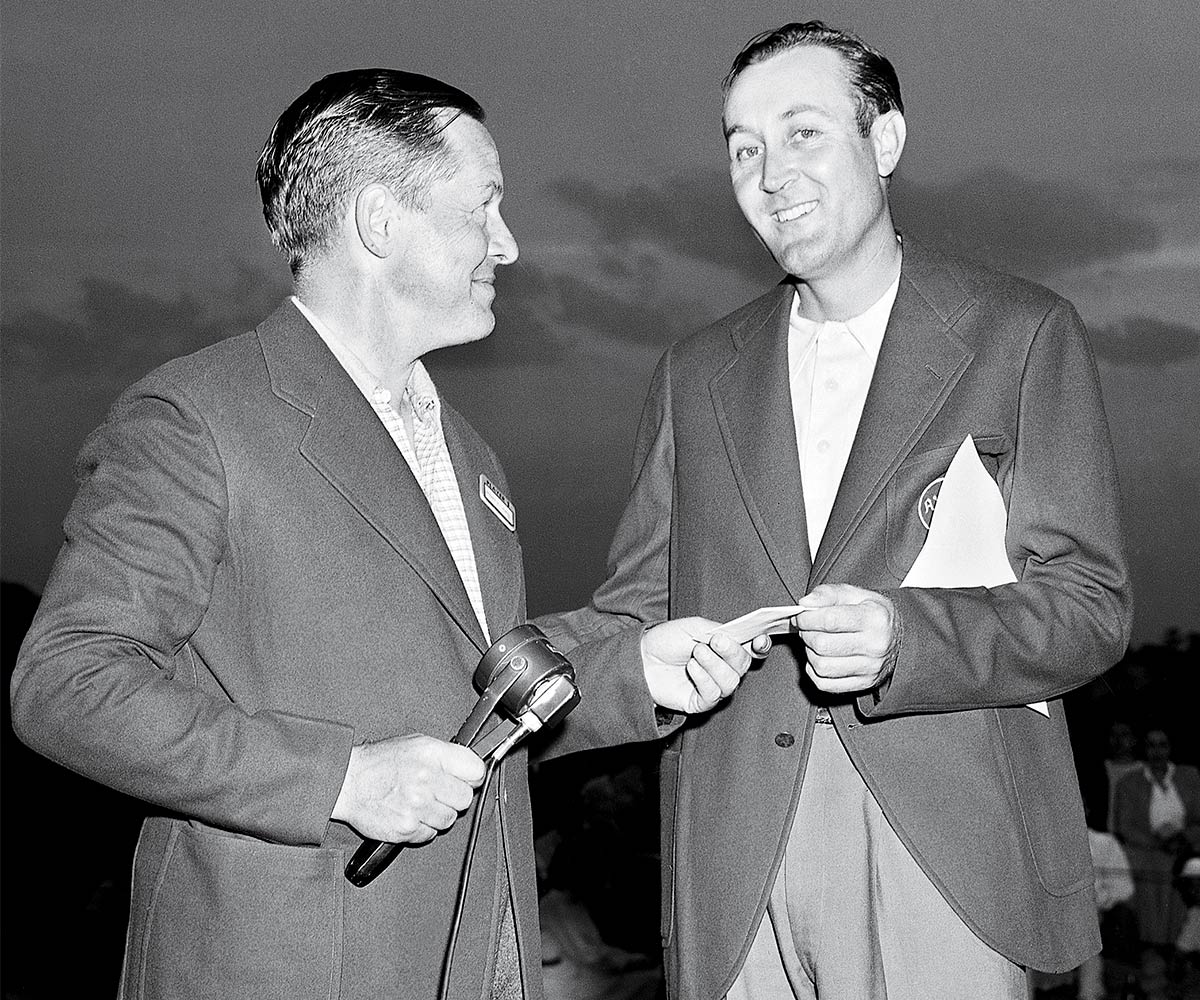
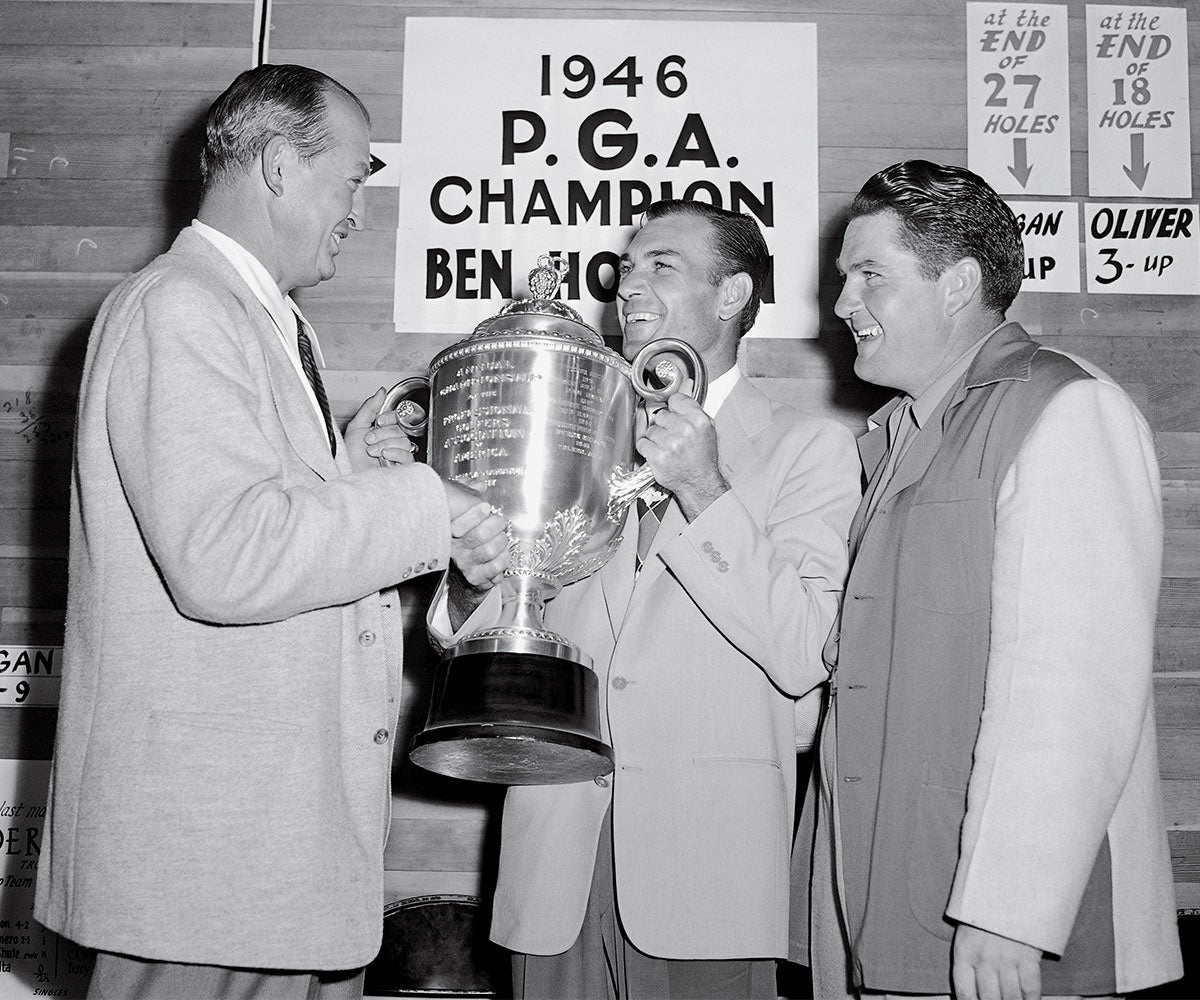
The 1946 Masters was the first big tournament of postwar life and featured five players who had earned a Purple Heart. The surprise winner was Herman Keiser, a sailor who spent 31 months aboard the USS Cincinnati. A few months later Lloyd Mangrum won the U.S. Open, an incredible comeback from his war injuries and a victory that enraptured the nation. “I don’t suppose that any of the pro or amateur golfers who were combat soldiers, marines or sailors will soon be able to think of a three-putt green as one of the really bad troubles in life,” Mangrum said. He would go on to 36 career victories and a spot in the Hall of Fame.
Ben Hogan — who served more than two years in the Army Air Corps, reaching the rank of captain — won the ensuing PGA Championship, beginning his ascent into the game’s most galvanizing figure since Bobby Jones. (Byron Nelson had single-handedly kept golf on the sports pages during the war, winning 11 straight tournaments in 1945, but Lord Byron retired to his ranch in ’46.) Arnie Palmer followed Hogan and, along with Eisenhower, became a massive popularizing force for golf. Among the mythmakers who chronicled Palmer’s exploits was Pat Ward-Thomas, the Royal Air Force POW at Stalag Luft III who went on to become a celebrated golf writer.
Many had fretted that the game would die during the war, but the Greatest Generation embraced the greatest game, taking golf to new heights. Now we face another collective inflection point: Where does golf fit into this trying time? The answer can be found in a letter Bobby Jones sent at the outbreak of World War II to the newspaperman O.B. Keeler, his friend and biographer. Americans “need breathing spells in their thinking as much as workmen need rest for their hands,” Jones wrote. “The best way for them to get exercise, fresh air and mental relaxation at the same time is to play golf. They can’t do much worrying on a golf course. I think the judicious use of the game can prevent a lot of jitters and nervous breakdowns. I wish you would check this angle with some of your psychologist friends. It might be a sale you ought to make.”

